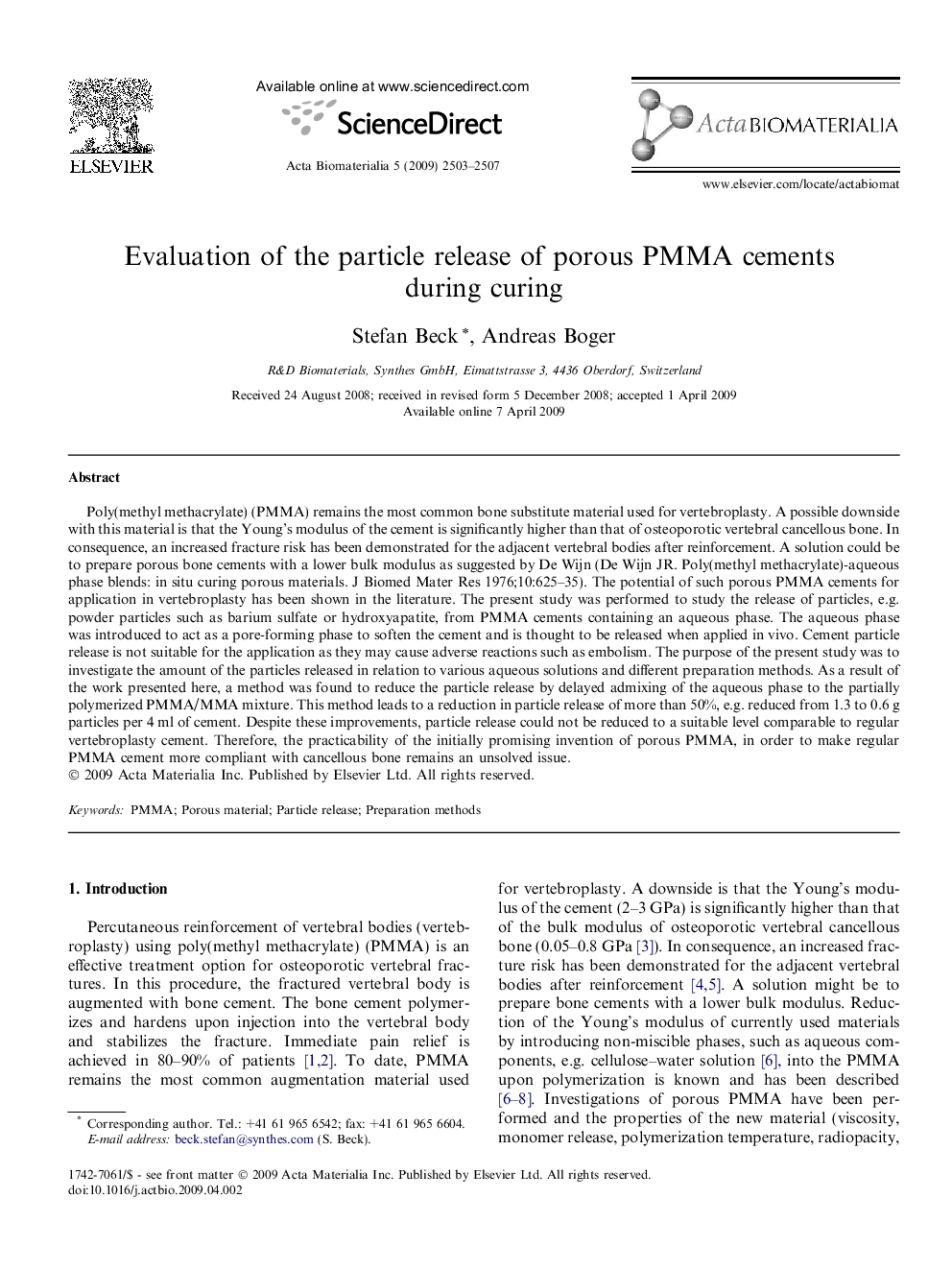| Article ID | Journal | Published Year | Pages | File Type |
|---|---|---|---|---|
| 1932 | Acta Biomaterialia | 2009 | 5 Pages |
Poly(methyl methacrylate) (PMMA) remains the most common bone substitute material used for vertebroplasty. A possible downside with this material is that the Young’s modulus of the cement is significantly higher than that of osteoporotic vertebral cancellous bone. In consequence, an increased fracture risk has been demonstrated for the adjacent vertebral bodies after reinforcement. A solution could be to prepare porous bone cements with a lower bulk modulus as suggested by De Wijn (De Wijn JR. Poly(methyl methacrylate)-aqueous phase blends: in situ curing porous materials. J Biomed Mater Res 1976;10:625–35). The potential of such porous PMMA cements for application in vertebroplasty has been shown in the literature. The present study was performed to study the release of particles, e.g. powder particles such as barium sulfate or hydroxyapatite, from PMMA cements containing an aqueous phase. The aqueous phase was introduced to act as a pore-forming phase to soften the cement and is thought to be released when applied in vivo. Cement particle release is not suitable for the application as they may cause adverse reactions such as embolism. The purpose of the present study was to investigate the amount of the particles released in relation to various aqueous solutions and different preparation methods. As a result of the work presented here, a method was found to reduce the particle release by delayed admixing of the aqueous phase to the partially polymerized PMMA/MMA mixture. This method leads to a reduction in particle release of more than 50%, e.g. reduced from 1.3 to 0.6 g particles per 4 ml of cement. Despite these improvements, particle release could not be reduced to a suitable level comparable to regular vertebroplasty cement. Therefore, the practicability of the initially promising invention of porous PMMA, in order to make regular PMMA cement more compliant with cancellous bone remains an unsolved issue.
